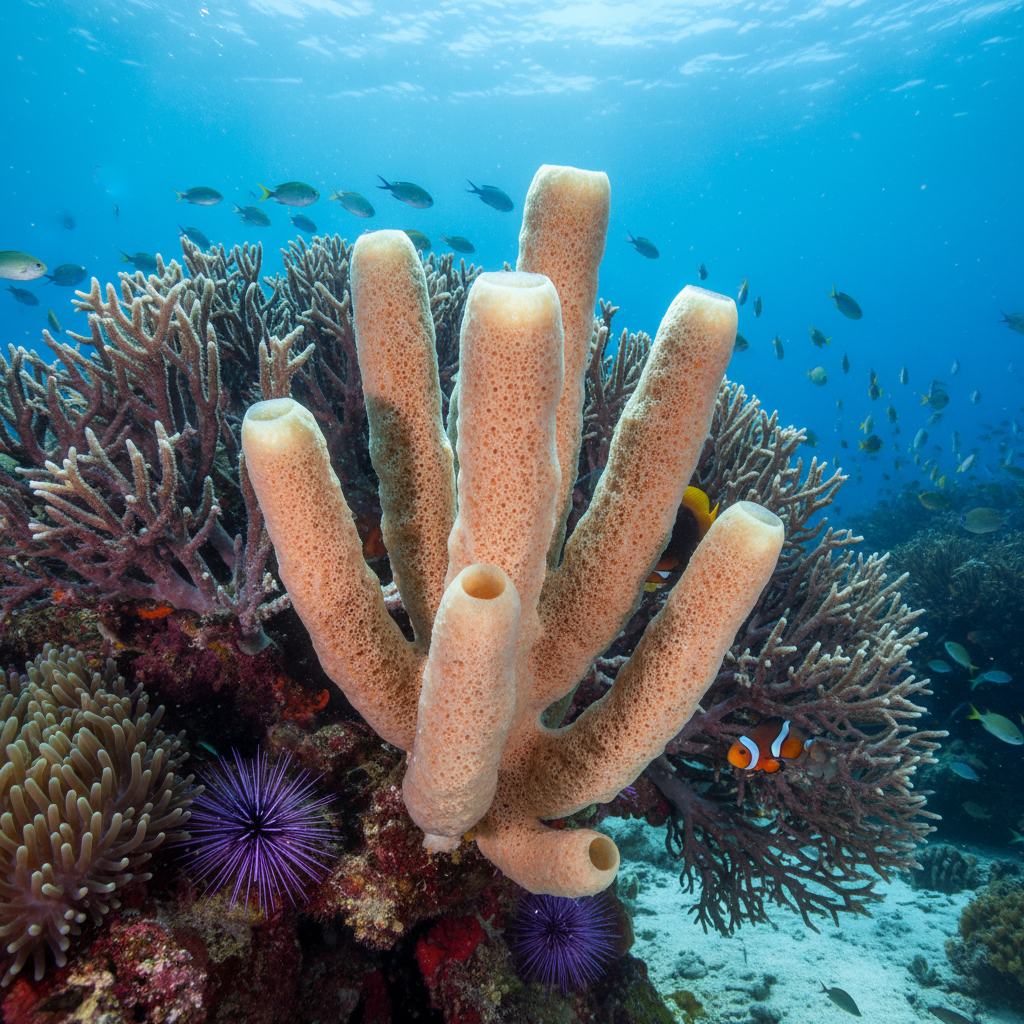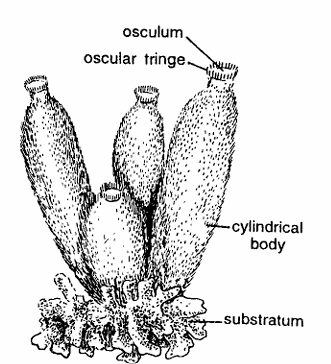Habit and habitat
- It is a small, solitary or colonial marine sponge found in shallow to approximately 60 fathoms deep in well oxygenated water.
Distribution
- Found in Gulf of St. Lawrence.
General Characterstics
The classification and other general characters are similar to Sycon, But Grantia differs from Sycon so that the dermal membrane spreads over the entire surface of the sponge, forming a” cortex of varying thickness having special cortical spicules.
- Complex vase-shaped body, measuring 20 to 25 mm in length and 5 to 6 mm in diameter.
- Each cylinder bulges in the middle and opens to the exterior by osculum.
- Body surface is covered by a ostia bearing membrane.
- At the distal free end there is a large osculum, encircled by a fringe of large giant monaxon spicules forming funnel-shaped collar or oscular fringe.
- Proximal and or base attached to substratum.
- Body wall is thick through which monaxon, triaxon and tetraxon spicules project.
- Body wall is composed of outer dermal epithelium, middle mesenchyma and inner flattened epithelium lining spongocoel which opens through the osculum.
- Canal system is syconoid. Choanocytes are restricted to radial canals.
- Course of water current is ostia – prosopyles – radial – canals -apopyles -spongocoel -osculum – exterior.
- Nutrition, respiration and excretion by canal system.
- Hermaphroditic.
- Reproduction by sexual or asexual methods. Asexual reproduction by budding and regeneration, while sexual by ova and sperms.
- Larva is amphiblastula.

Identification
Since the animal has radial tubes, oscular fringe, ostia and all above features, hence it is Grantia.

